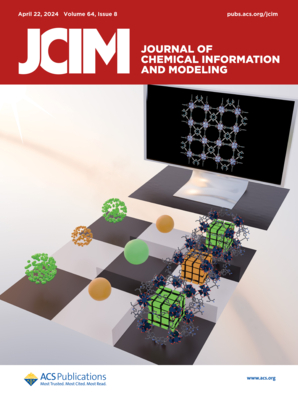PPDock:基于口袋预测的蛋白质配体盲对接。
IF 5.3
2区 化学
Q1 CHEMISTRY, MEDICINAL
引用次数: 0
摘要
预测配体在蛋白质结合位点(口袋)的对接构象,即蛋白质-配体对接,对药物发现至关重要。传统的对接方法在盲对接(口袋未知)时推理时间长,精度低。近年来,基于深度学习的盲对接技术显著提高了推理效率,取得了良好的对接效果。然而,这些方法通常使用整个蛋白质进行对接,这使得难以识别正确的口袋,导致泛化性能差。在这项研究中,我们提出了一个两阶段的对接范式,其中口袋预测之后是基于口袋的对接。基于此,我们设计了一种基于口袋预测的盲对接方法(PPDock)。通过对基准数据集的大量实验,我们提出的PPDock在几乎所有评估指标上都优于现有方法,显示出强大的对接精度、泛化能力和效率。本文章由计算机程序翻译,如有差异,请以英文原文为准。
PPDock: Pocket Prediction-Based Protein-Ligand Blind Docking.
Predicting the docking conformation of a ligand in the protein binding site (pocket), i.e., protein-ligand docking, is crucial for drug discovery. Traditional docking methods have a long inference time and low accuracy in blind docking (when the pocket is unknown). Recently, blind docking techniques based on deep learning have significantly improved inference efficiency and achieved good docking results. However, these methods often use the entire protein for docking, which makes it difficult to identify the correct pocket and results in poor generalization performance. In this study, we propose a two-stage docking paradigm, where pocket prediction is followed by pocket-based docking. Following this paradigm, we design a new blind docking method based on pocket prediction (PPDock). Through extensive experiments on benchmark data sets, our proposed PPDock outperforms existing methods in nearly all evaluation metrics, demonstrating strong docking accuracy, generalization ability, and efficiency.
求助全文
通过发布文献求助,成功后即可免费获取论文全文。
去求助
来源期刊
CiteScore
9.80
自引率
10.70%
发文量
529
审稿时长
1.4 months
期刊介绍:
The Journal of Chemical Information and Modeling publishes papers reporting new methodology and/or important applications in the fields of chemical informatics and molecular modeling. Specific topics include the representation and computer-based searching of chemical databases, molecular modeling, computer-aided molecular design of new materials, catalysts, or ligands, development of new computational methods or efficient algorithms for chemical software, and biopharmaceutical chemistry including analyses of biological activity and other issues related to drug discovery.
Astute chemists, computer scientists, and information specialists look to this monthly’s insightful research studies, programming innovations, and software reviews to keep current with advances in this integral, multidisciplinary field.
As a subscriber you’ll stay abreast of database search systems, use of graph theory in chemical problems, substructure search systems, pattern recognition and clustering, analysis of chemical and physical data, molecular modeling, graphics and natural language interfaces, bibliometric and citation analysis, and synthesis design and reactions databases.

 求助内容:
求助内容: 应助结果提醒方式:
应助结果提醒方式:


